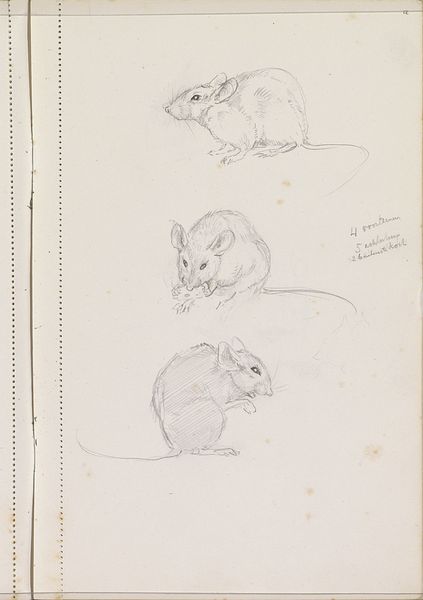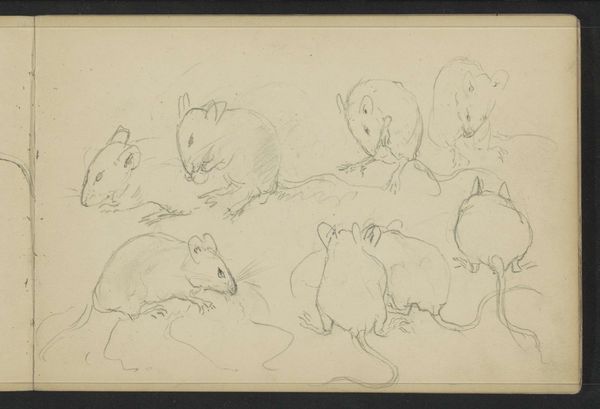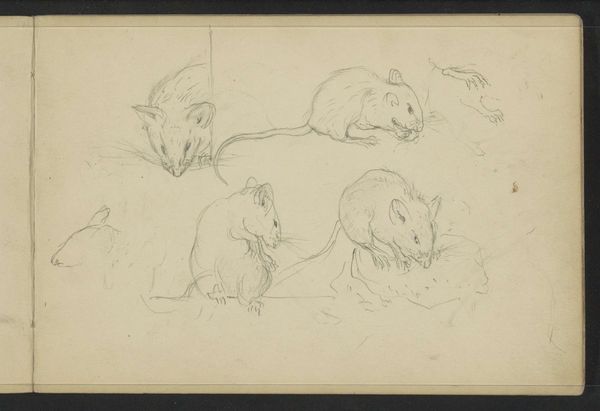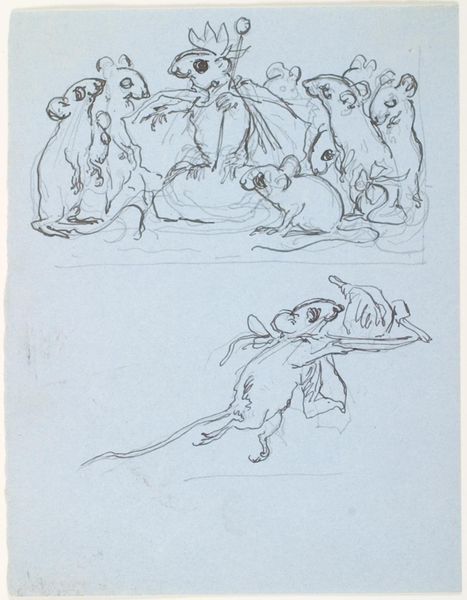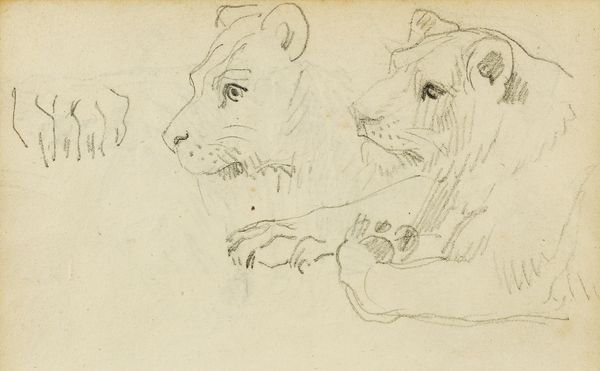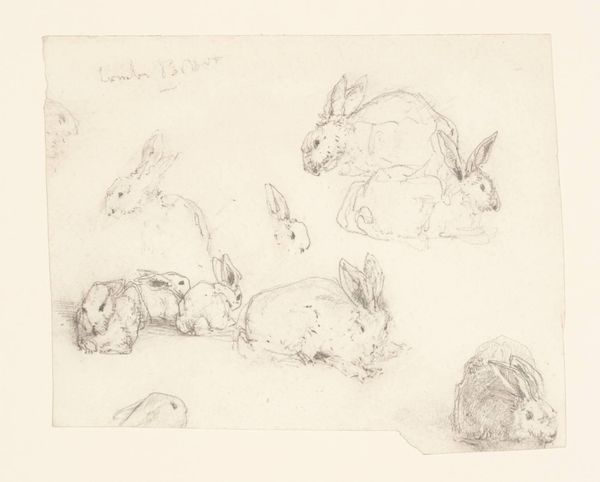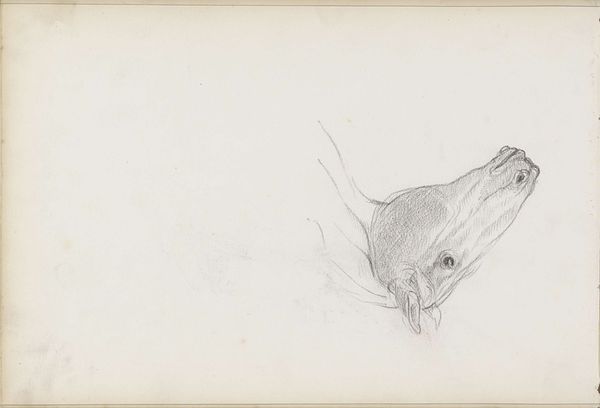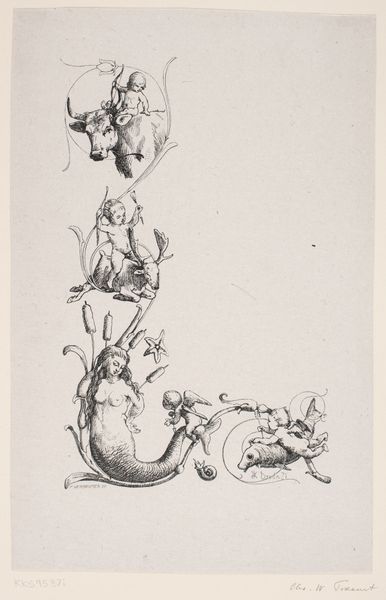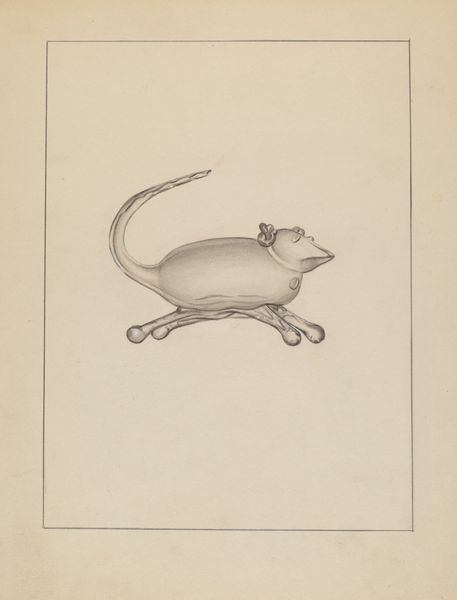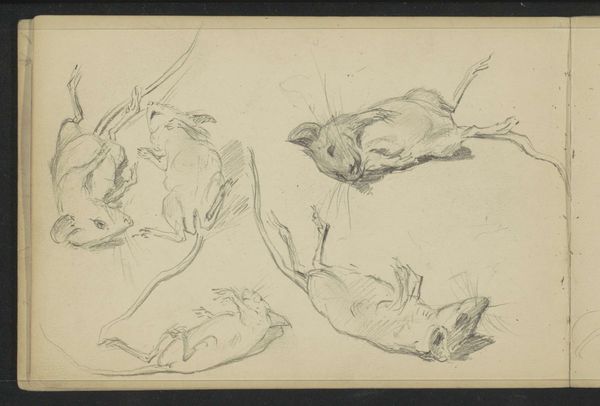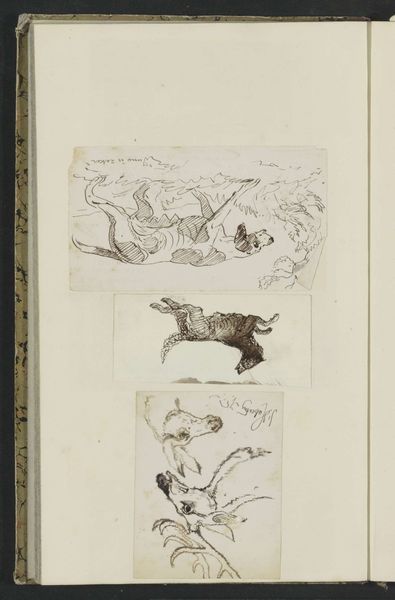
drawing, paper, pencil
#
drawing
#
amateur sketch
#
toned paper
#
light pencil work
#
quirky sketch
#
pencil sketch
#
paper
#
form
#
personal sketchbook
#
sketchwork
#
detailed observational sketch
#
pencil
#
line
#
sketchbook drawing
#
sketchbook art
#
realism
Copyright: Rijks Museum: Open Domain
Curator: What we have here is “Muizen,” or “Mice,” a pencil drawing on paper by Otto Verhagen, dating back to somewhere between 1928 and 1930. Editor: It’s quite charming, isn’t it? The quick lines, the delicate shading... it captures a surprising sense of movement, despite the static medium. The composition is also rather curious; a seemingly random arrangement on toned paper. Curator: Toned paper certainly allows a contrast between the material’s properties and the subjects rendered, which calls attention to the context of artistic production. Looking at the piece from a materialist viewpoint, consider the availability of paper and pencils at this time. This wasn't necessarily high art, but daily, working-class visuality, a functional way of seeing... Editor: Function, yes, perhaps as a study, but look at the way Verhagen renders each mouse so uniquely! The lines have weight. Some are hunched, some alert, one is even on its back! This conveys form, certainly, but each exhibits character, a specific attitude emphasized by variations in light pencil work. The structural relationships create narrative possibilities. Curator: Indeed, consider the narrative! Are these sketches from life? Did Verhagen observe mice in his own home or studio? That context changes the reading entirely; this isn’t mere formalism at play, but a recording of labor and observation. The tonal variations you noted highlight class positions, considering the access one had to materials like toned paper and refined pencils... Was this a working-class individual or from an elite context of art making? Editor: The tonal quality adds to the atmospheric, giving depth to the drawings. It isn't purely decorative; instead, it adds nuance. What appears simple in its production becomes incredibly rich under visual engagement. Curator: It showcases a form of quotidian practice; a moment of production documented in sketch. I find beauty and meaning in exploring those material circumstances! It brings insight into modes of living and working from this time. Editor: I agree; viewing art through varied lenses expands comprehension. "Muizen" provides a wealth of knowledge within this seemingly informal, personal art sketch. Curator: Yes, let's move onto something less squeaky.
Comments
No comments
Be the first to comment and join the conversation on the ultimate creative platform.
